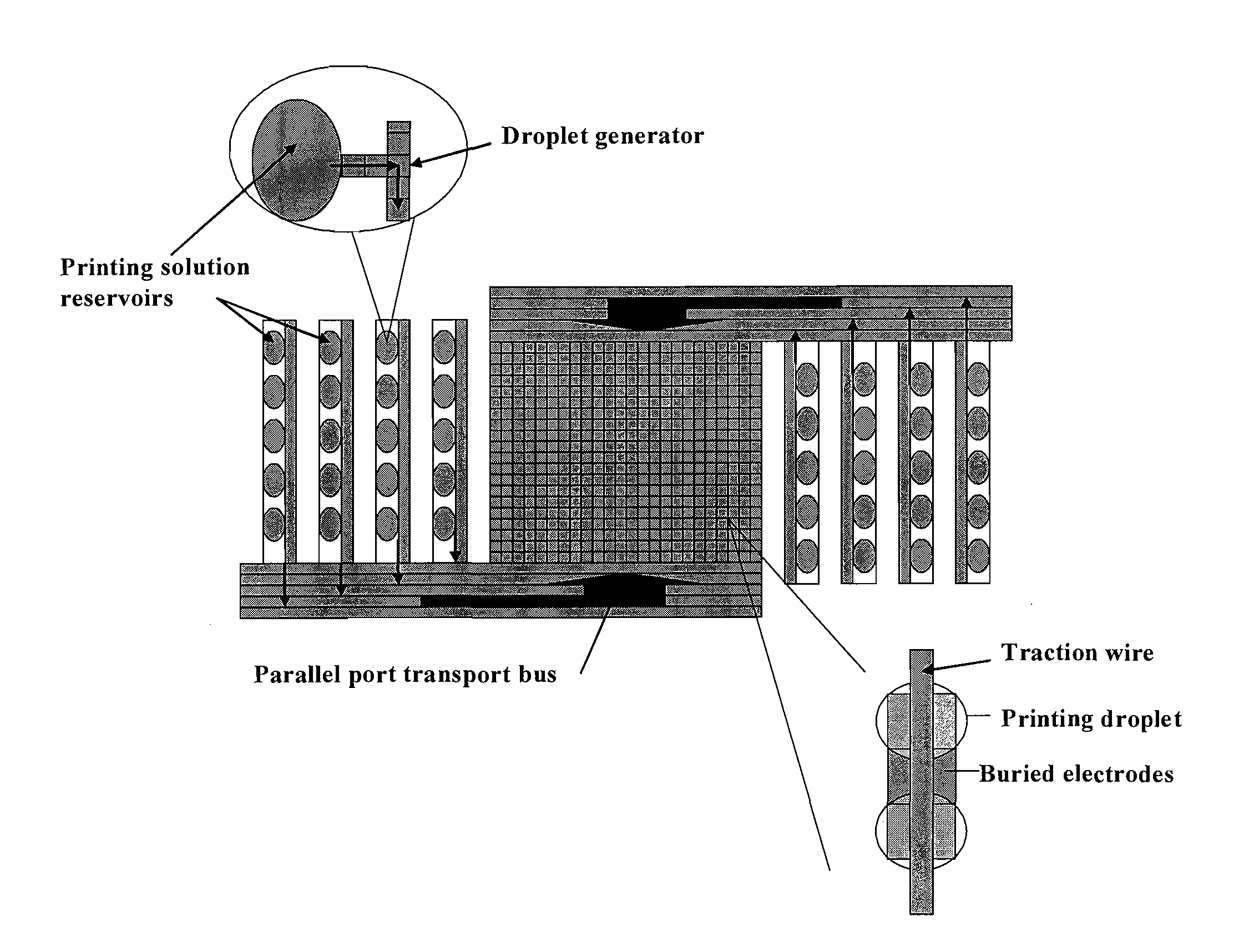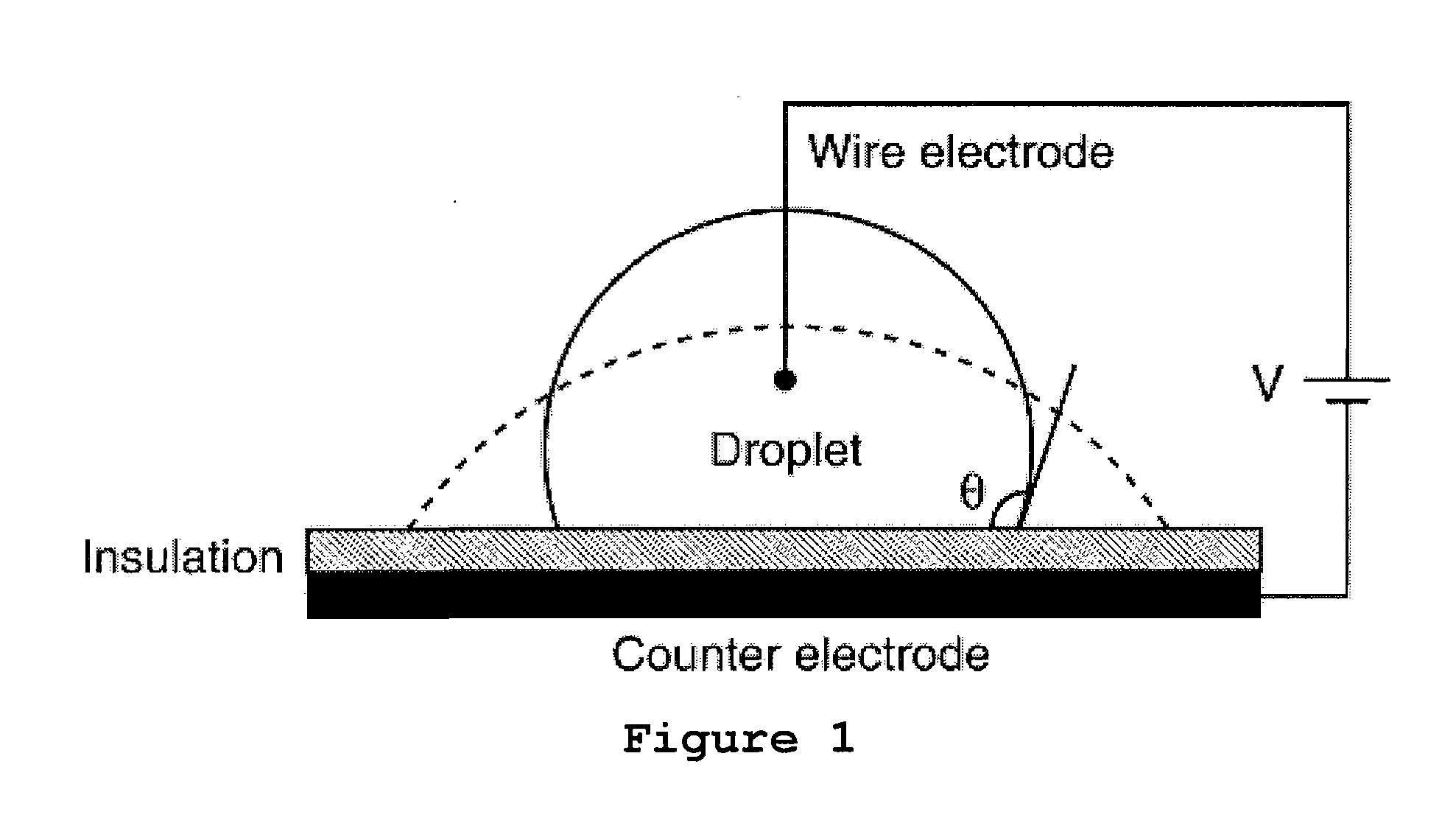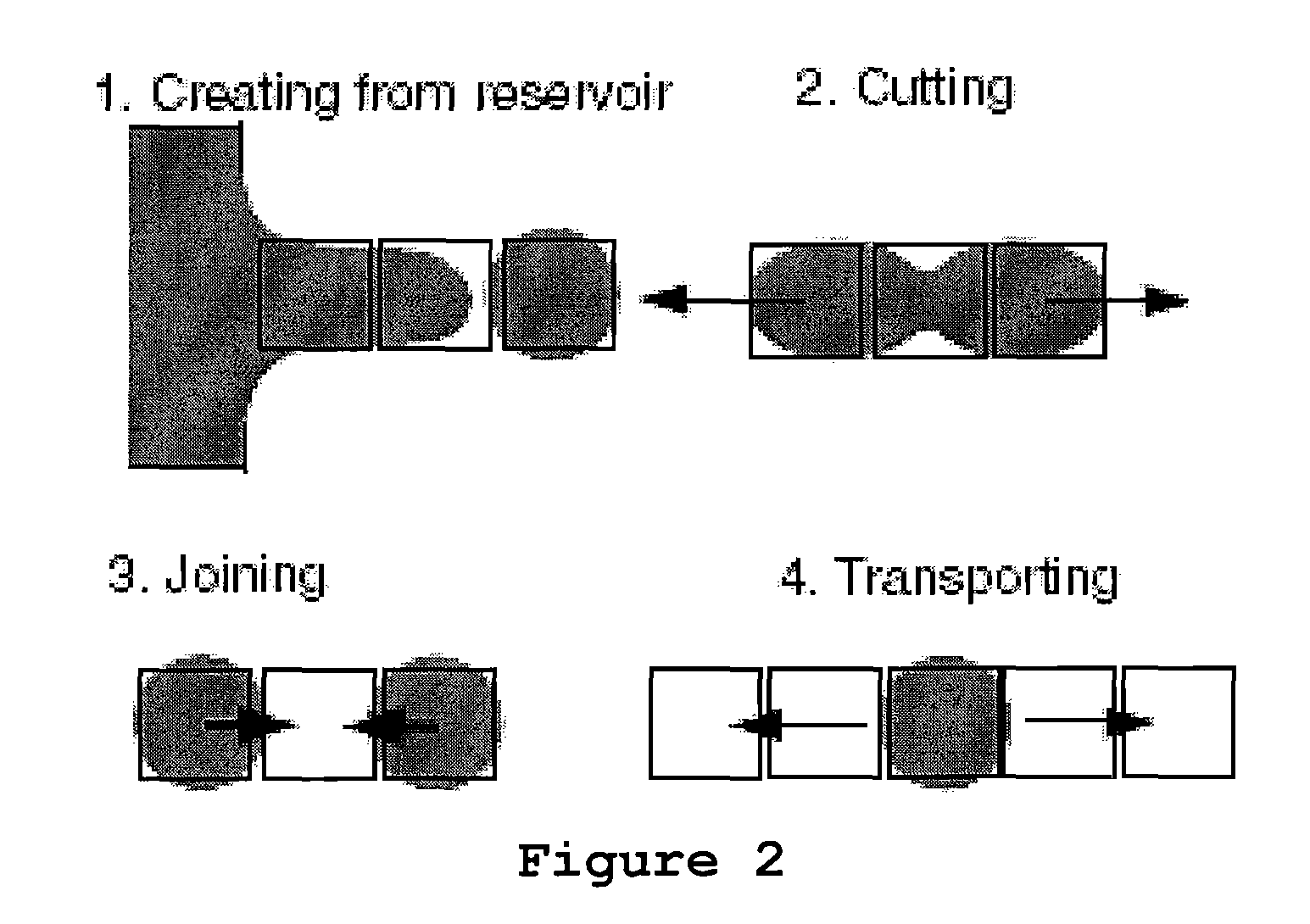Electrowetting Microarray Printing System and Methods for Bioactive Tissue Construct Manufacturing
a printing system and microarray technology, applied in the direction of specific use bioreactors/fermenters, biomass after-treatment, enzymology, etc., can solve the problems of limited control of seeding, limited control of microarchitecture, and inability to achieve heterogeneous cell patterning
- Summary
- Abstract
- Description
- Claims
- Application Information
AI Technical Summary
Benefits of technology
Problems solved by technology
Method used
Image
Examples
experimental examples
[0142]The invention is further described in detail by reference to the following experimental examples. These examples are provided for purposes of illustration only, and are not intended to be limiting unless otherwise specified. Thus, the invention should in no way be construed as being limited to the following examples, but rather, should be construed to encompass any and all variations which become evident as a result of the teaching provided herein.
[0143]The materials and methods employed in the experiments disclosed herein are now described.
example 1
Hydrogel Dispensing
[0144]The capability of EWOD to dispense hydrogels has been assessed as follows. Several solutions were mixed, filtered, and then used as described below: a 1% w / v sodium alginate, a 2% w / v sodium alginate with a viscosity of 250 cP at 25° C., and a 1% w / v calcium chloride solution. The experiments described herein were performed on a glass chip with patterned chrome electrodes, having a pitch of 0.75 mm and a gasket to maintain top-plate height above the electrodes. The chip was first coated with Parylene C, which functions as a dielectric and chemical insulator, and then was coated with a thin layer of Teflon AF for hydrophobicity. The top plate consisted of a sputtered indium-tin oxide (ITO)-coated film, which was later coated with Teflon AF for hydrophobicity. ITO is a transparent conductor, allowing the top plate to remain grounded during operation. All of the experiments were performed at room temperature.
[0145]First, experiments were conducted to determine ...
example 2
Cell Manipulation on EWOD Chip
[0147]The capability of the EWOD process for handling, dispensing and actuating cell suspensions was examined. Further, the voltage that can be applied to cells without damaging them was examined.
[0148]Tests were conducted on the EWOD chip using the human fetal osteoblast cell line hFOBs 1.19 (obtained from ATCC between passage 11 and 13). Cells were cultured in Dulbecco's Modified Eagles Medium (DMEM) containing 10% FBS and 1% Penicillin-Streptomycin prior to the experiment. Cultured cells were trypsinised, suspended in PBS and separated by centrifuging. The separated cells were treated with a Live Dead Assay (Molecular Probes) reagent solution (6 μM ethidium homodimer-1 and 2 μM Calcein in PBS) according to the manufacturer's instructions. The cell suspension was loaded on chips, which were actuated with voltages ranging from 40-60 V. After actuation the EWOD chips were observed under fluorescent microscope to quantify live and dead cells. The fractio...
PUM
| Property | Measurement | Unit |
|---|---|---|
| actuation voltage | aaaaa | aaaaa |
| sizes | aaaaa | aaaaa |
| size | aaaaa | aaaaa |
Abstract
Description
Claims
Application Information
 Login to View More
Login to View More - R&D
- Intellectual Property
- Life Sciences
- Materials
- Tech Scout
- Unparalleled Data Quality
- Higher Quality Content
- 60% Fewer Hallucinations
Browse by: Latest US Patents, China's latest patents, Technical Efficacy Thesaurus, Application Domain, Technology Topic, Popular Technical Reports.
© 2025 PatSnap. All rights reserved.Legal|Privacy policy|Modern Slavery Act Transparency Statement|Sitemap|About US| Contact US: help@patsnap.com



